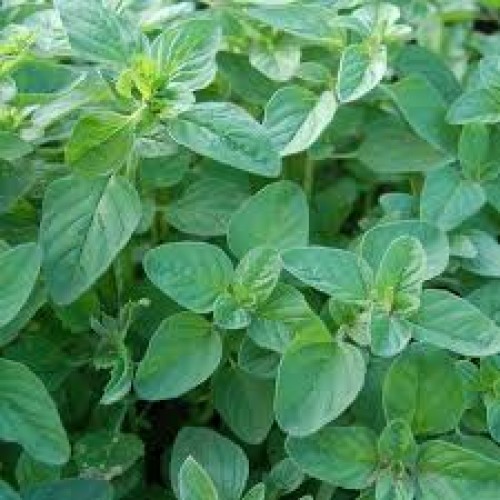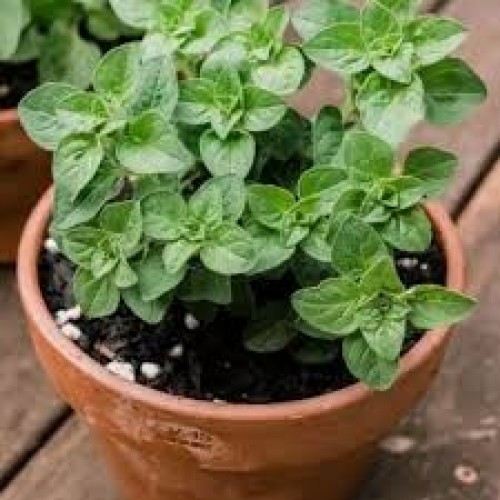off
-
Sold
-

-

out
Oregano Plant: Nature, Care & Advantages
Oregano (Botanical name: Origanum vulgare) is a popular herb known for its aromatic leaves and robust flavor, commonly used in cooking and medicinal applications. This herb belongs to the mint family and is widely appreciated for its use in Mediterranean, Italian, and Mexican cuisine. Oregano is also well-regarded for its numerous health benefits, including antimicrobial and anti-inflammatory properties.
Nature of the Oregano Plant
Oregano is a perennial herb that grows as a bushy plant, typically reaching a height of 12 to 24 inches. It has oval-shaped leaves with a pungent, spicy aroma and small purple or pink flowers that bloom in late summer. Oregano thrives in sunny, dry environments and prefers well-drained, slightly alkaline soil. It is easy to grow and can be cultivated in pots, garden beds, or even window boxes. This hardy herb is drought-tolerant and can withstand moderate temperature fluctuations.
Care for the Oregano Plant
- Climate: Oregano prefers a warm climate with plenty of sunlight. It grows best in temperatures between 18°C to 30°C (65°F to 85°F) and requires 6-8 hours of direct sunlight each day. It is tolerant of heat but should be protected from extreme cold temperatures.
- Soil: Oregano thrives in well-drained, slightly alkaline soil with a pH level between 6.0 and 8.0. It grows well in sandy or loamy soil, which helps prevent waterlogging and root rot.
- Watering: Oregano is drought-tolerant and does not require frequent watering. It is best to water the plant when the soil feels dry, but avoid overwatering, as this can lead to root rot. Ensure the plant has good drainage to prevent water buildup.
- Sunlight: Oregano requires full sunlight to grow optimally. Ensure it is placed in a sunny location where it can receive at least 6 hours of direct sunlight each day. It can also tolerate partial shade but thrives in full sun.
- Fertilization: While oregano does not require heavy fertilization, adding compost or organic matter to the soil can enhance growth. A balanced, slow-release fertilizer can also be used once a year during the growing season.
- Pruning: To encourage bushy growth and prevent the oregano plant from becoming leggy, regularly prune the tips of the stems. You can also remove any flowers that appear to focus the plant’s energy on leaf production.
- Propagation: Oregano can be propagated from seeds, cuttings, or division. It is easy to start oregano from seeds, but stem cuttings are the quickest way to establish a new plant. Place cuttings in water or soil until they root.
Advantages of the Oregano Plant
- Rich in Nutrients: Oregano is a good source of essential vitamins and minerals, including vitamins A, C, and K, as well as iron, calcium, magnesium, and fiber. These nutrients support overall health and wellness.
- Antioxidant Properties: Oregano contains antioxidants that help protect the body from oxidative stress and free radical damage. This can contribute to a reduced risk of chronic diseases such as heart disease and cancer.
- Anti-inflammatory Effects: The plant contains compounds like rosmarinic acid and carvacrol, which are known for their anti-inflammatory properties. Consuming oregano may help reduce inflammation and alleviate symptoms of conditions like arthritis.
- Antibacterial and Antifungal: Oregano has natural antimicrobial properties, making it effective against bacteria, fungi, and viruses. It is often used in natural remedies to help fight infections, particularly respiratory and digestive issues.
- Supports Digestive Health: Oregano has been traditionally used to aid digestion. It can help reduce bloating, gas, and indigestion. It is also thought to promote healthy gut bacteria and improve overall digestive function.
- Respiratory Health Benefits: Oregano is known to have expectorant properties, which can help clear mucus from the lungs and ease symptoms of respiratory conditions like coughs, colds, and bronchitis.
- Enhances Flavor in Cooking: Oregano is widely used in cooking, particularly in Mediterranean, Italian, and Mexican cuisines. Its bold, aromatic flavor adds depth to a variety of dishes, including sauces, pizzas, pasta, salads, and roasted meats.
Conclusion
The oregano plant is a versatile herb that offers numerous benefits, from its culinary uses to its medicinal properties. With proper care, it can be a valuable addition to any garden or kitchen. Its rich flavor, coupled with its health benefits, makes oregano a must-have herb for both home gardeners and those seeking natural remedies.